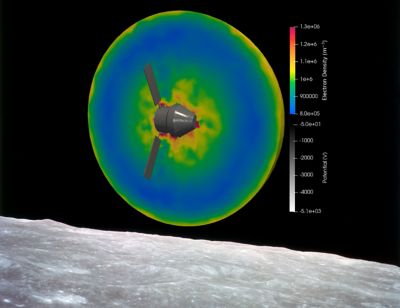-
-
학생용 무료 소프트웨어에 액세스하기
차세대 엔지니어에게 힘을 실어주는 Ansys
학생들은 세계적 수준의 시뮬레이션 소프트웨어를 무료로 이용할 수 있습니다.
-
지금 바로 Ansys에 연결하십시오!
미래를 설계하기
시뮬레이션이 다음 혁신을 어떻게 지원할 수 있는지 알아보려면 Ansys와 연결하십시오.
국가
무료 트라이얼
제품 및 서비스
학습하기
회사 정보
Back
제품 및 서비스
Ansys Charge Plus
충전 및 방전 모델링 솔루션
다양한 응용 분야에 걸친 충전, 방전 및 대전입자 운송을 하나의 간소화된 작업 흐름으로 제공하는 3D 모델링 솔루션입니다.
Ansys Discovery가 제공하는 물질의 충전 및 방전 모델링
Ansys Charge Plus는 Ansys Discovery CAD 인터페이스에 구축된 간소화된 워크플로에서 내부 및 표면 대전, 입자 이동, 접점부에서의 아크 현상을 처리하도록 설계된 4개의 물리 솔버를 활용하여 다양한 분석을 지원합니다. Ansys Charge Plus는 물질의 충전 및 방전과 관련된 위험을 신속하게 평가하고 관리합니다.
-
Discovery의 Direct Modeler UI

-
3D Particle Transport

-
표면 및 내부 충전

-
공기 및 유전체에서 ESD


-
Finite Difference Time- Domain(FDTD) -
3D Particle Transport -
비선형 공기 화학 모듈 -
Ansys HPC 지원
-
유한 요소법(FEM) -
Self-Consistent Coupled 시뮬레이션 -
AGI STK 및 Ansys EnSight 호환성
-
최적화된 Charge Balance Equation 솔버 -
통합 전처리 및 후처리 -
Ansys SpaceClaim 포함
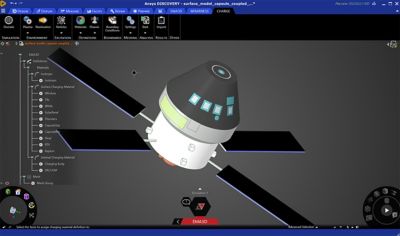
2025년 1월
새로운 기능
2025 R1 Ansys Charge Plus 릴리스는 플라즈마 역학 시뮬레이션을 개선하고 광선 추적 기능을 개선하며 종합적인 플라즈마 상태 검사를 위한 전자 에너지 분포 분석을 도입했습니다.
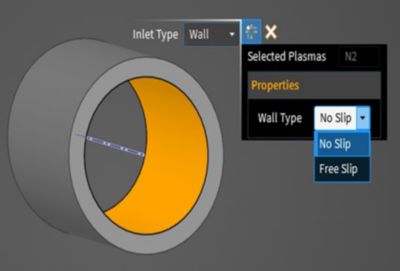
플라즈마 역학의 유체 경계 조건
플라즈마 시뮬레이션의 인렛 및 아웃렛 경계를 개선하여 사용자가 CFD 사용자에게 친숙한 관련 매개변수로 플라즈마, 표면 및 인렛/아웃렛 유형을 지정할 수 있습니다.
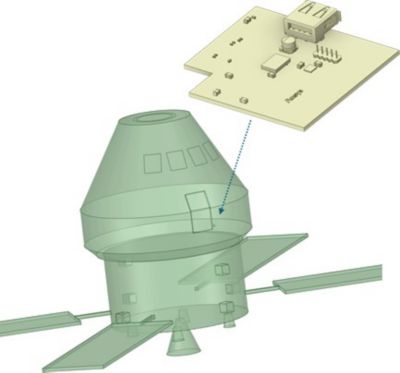
광선 추적 개선 사항
이러한 발전은 고에너지 효과로부터 전자 장치의 차폐 추정을 개선하고, 전체 컴포넌트에 대한 새로운 광선 추적 프로브/검출기를 도입하며, 안정성과 성능을 향상시켜 더 빠르고 정확한 결과를 얻을 수 있습니다.
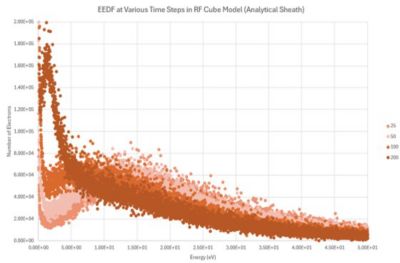
전자 에너지 분포
시간에 따라 플라즈마의 설명 상태를 제공하여 포괄적인 플라즈마 분석을 위해 다양한 RF 사이클 후 전자 에너지를 검사할 수 있습니다.
기능
- 내부 충전
- 공기 중 정전기 방전
- 표면 충전
- 3D 입자 전송
- 고체 유전체에서의 아크
- 결합 충전 시뮬레이션
예정된 웨비나
LIVE WEBINAR
July 23, 2024
11 AM EDT / 5 PM CEST / 8:30 PM IST

Ansys 2024 R2: Ansys EMC Plus 및 Ansys Charge Plus 업데이트
Ansys EMC Plus 및 Ansys CHARGE Plus는 EMI/EMC 및 ESD와 같은 전체 플랫폼 전자기 이벤트를 시뮬레이션하는 솔루션입니다. 케이블과 하네스 모델링, 복잡한 메시 연결, 3D로 자기장을 시각화하는 효율적인 워크플로 시연을 확인하십시오. Rad-hard 계산에 레이 트레이싱을 사용하는 방법, 플라즈마 내 전자기 방전을 예측하는 방법, 사용자가 방사선 전달을 위해 입자 에너지 전달 스펙트럼을 변경하는 방법을 알아보십시오.
Ansys Charge Plus 자료 및 이벤트
주요 웨비나
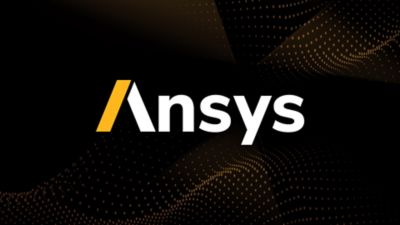
Ansys EMA3D 툴의 기초 및 통합 3부: Ansys Charge Plus의 Particle-in-Cell 솔버
5부 시리즈의 세 번째인 이 웨비나에서는 항공우주 및 반도체 응용 분야에서 charged particle 플라즈마를 모델링하고 시뮬레이션하기 위해 Ansys Charge Plus 전자기 시뮬레이션 툴을 사용하는 방법을 살펴봅니다.
누구나 활용 가능한 Ansys 소프트웨어
Ansys는 모든 사용자가 당사 제품에 액세스할 수 있다는 것을 가장 중요하게 생각합니다. 따라서 US Access Board(508조), Web Content Accessibility Guidelines(WCAG) 및 Voluntary Product Accessibility Template(VPAT)의 현재 형식에 근거한 접근성 요구 사항을 준수하기 위해 노력하고 있습니다.
시작하기
엔지니어링 과제에 직면하고 있다면우리 팀이 도와드리겠습니다. 풍부한 경험과 혁신에 대한 헌신을 가지고 있는 우리에게 연락해 주십시오. 협력을 통해 엔지니어링 문제를 성장과 성공의 기회로 바꾸십시오. 지금 문의하기
